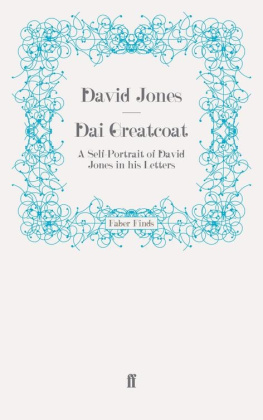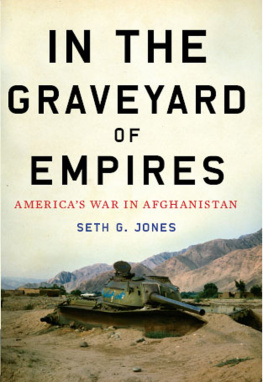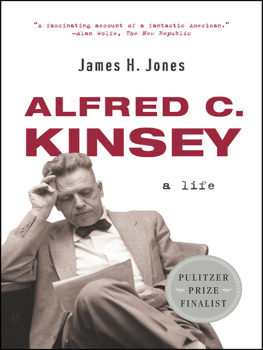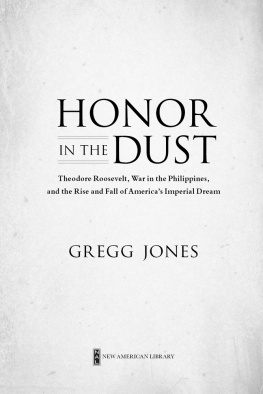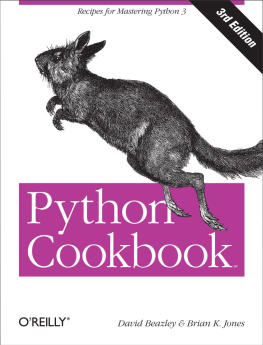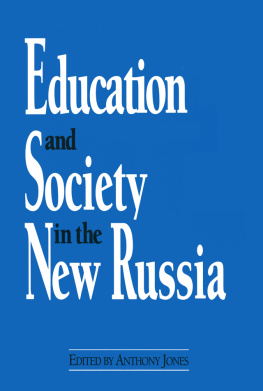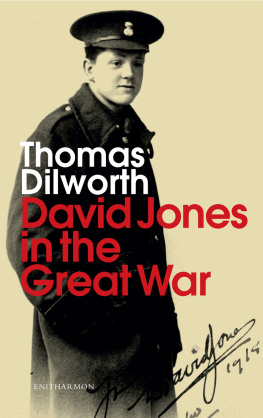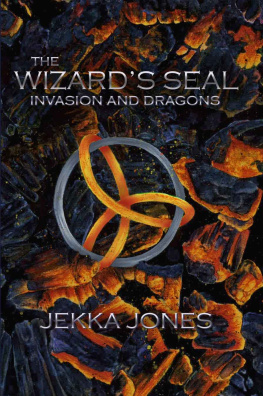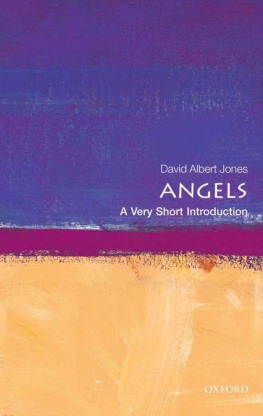Jones - Dai Greatcoat: a Self-Portrait of David Jones in his Letters
Here you can read online Jones - Dai Greatcoat: a Self-Portrait of David Jones in his Letters full text of the book (entire story) in english for free. Download pdf and epub, get meaning, cover and reviews about this ebook. City: London, year: 2015, publisher: Faber and Faber, genre: Detective and thriller. Description of the work, (preface) as well as reviews are available. Best literature library LitArk.com created for fans of good reading and offers a wide selection of genres:
Romance novel
Science fiction
Adventure
Detective
Science
History
Home and family
Prose
Art
Politics
Computer
Non-fiction
Religion
Business
Children
Humor
Choose a favorite category and find really read worthwhile books. Enjoy immersion in the world of imagination, feel the emotions of the characters or learn something new for yourself, make an fascinating discovery.
- Book:Dai Greatcoat: a Self-Portrait of David Jones in his Letters
- Author:
- Publisher:Faber and Faber
- Genre:
- Year:2015
- City:London
- Rating:3 / 5
- Favourites:Add to favourites
- Your mark:
- 60
- 1
- 2
- 3
- 4
- 5
Dai Greatcoat: a Self-Portrait of David Jones in his Letters: summary, description and annotation
We offer to read an annotation, description, summary or preface (depends on what the author of the book "Dai Greatcoat: a Self-Portrait of David Jones in his Letters" wrote himself). If you haven't found the necessary information about the book — write in the comments, we will try to find it.
Dai Greatcoat: a Self-Portrait of David Jones in his Letters — read online for free the complete book (whole text) full work
Below is the text of the book, divided by pages. System saving the place of the last page read, allows you to conveniently read the book "Dai Greatcoat: a Self-Portrait of David Jones in his Letters" online for free, without having to search again every time where you left off. Put a bookmark, and you can go to the page where you finished reading at any time.
Font size:
Interval:
Bookmark:
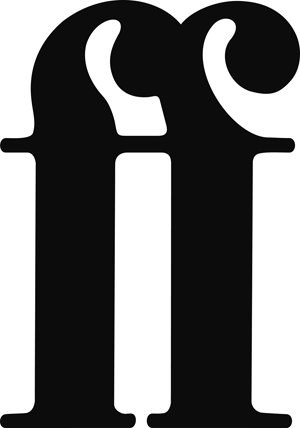
i am of my otes it is this wurk I know it will bring me to deaths door i know it will
William Penrose Taplow
D AVID JONES IN 1964
Photograph by Mark Gerson
Plates 18 are reproduced here by kind permission of the Trustees of the Estate of David Jones and Mr. Anthony dOffay as administrator of the copyrights. They form a sequence, illustrating various places in which David Jones worked during the years 192174.
Where does Dai Greatcoat come from? He is a Welsh soldier who appears on three occasions in David Joness long, poetically contrived, at times lyrical, narrative of the Great War, InParenthesis. When the Queen of the Woods cuts bright boughs of various flowering for those who died in Mametz Wood, during the Somme offensive, on 10is as a symbol for one who both endured and sought protection for so many years.
The plan of this book changed as it was being put together. It was to have been more of a biography illustrated by letters; but, as happens so often when one makes anything that one thinks will depend upon the makers judgement, the material itself took control and determined the form. It very soon became clear that, left to himself, David would both record the progress of his life (for one small but important detail we have to be specially thankful: he always put at the head of his letter the full address from which he was writing, and the date) and at the same time portray his character and personality. What David writes about are all the things that those who love and admire him most wish to know: where he is, of what he is thinking, what he is reading, what work he is doing or cannot succeed in doing, what he likes and dislikes, what moves him to joy or rage, what will interest the friend to whom he is writingoften with great profundity, but often, too, particularly in the earlier years, with lightness and humour.
The letters chosen for this collection have been taken almost entirely from four series, addressed to four friends: Davids contemporary Jim Ede (H.S.E. in the text), and three others born in the next decade who, with the passage of time, became more or less contemporary, Tom Burns (T.F.B.), Harman Grisewood (H.J.G.) and me (R.H.), with my wife (J.H.). This means that what is printed concentrates on a single aspect of the man. He may well (indeed, I know that he does) speak in a different tone, and so present a different person, to others with whom he had a different relationship. I felt, however, that I could not bring myself to copy and print anything which I could not fully understand, could not fully get the feel of, because it went into intellectual, emotional, literary, historical or religious fields, and attitudes to those fields, that were in any degree foreign to me. I wished to print only what was said in a tone of voice that was completely familiar to me. I could feel sure of my ground only if I knew Davids correspondent well enough to understand how what David wrote would be received and understood. Had I felt otherwise, a vast range of correspondence would no doubt have been open to me; sooner or later someone, I hope, will undertake the great task of hauling in the wider net.
I have, on one or two occasions, gone further afield and have printed letters, for example, to T. S. Eliot and W. H. Auden. These I happened to have by me at home, and although I was anxious not to burden the book with material of professional or literary interest, it seemed mean not to include them. There are some passages too, from letters to a younger man, Colin Hughes, and the reader will see that these contain some of Davids most valuable memories of the war, just as part of a letter to Saunders Lewis illuminates Davids own way of thinking at a particular time. The opening letter, to Philip Hagreen, another contemporary of Davids, could not be spared, because it is the earliest in date (1925) and in it can be seen the first indications of Davids later direction and, slight though it is, of what was to be his more fully elaborated epistolary style. A very different sort of book could have been compiled, and a very different aspect of the writer could have emerged, from his letters to the classical scholar Jackson Knight, for example, to his patron Helen Sutherland, to other women friends, and to his many friends and acquaintances in the academic world.
I am every day more amazed at the enormous mass of Davids correspondence. The four series from which this comparatively brief selection of this achievement.
For all the many re-draftings, Davids letters were written rapidly, and not read through or corrected. A common postscript runs Forgive all the lacunae and inconsistencies and meanderings . The syntax, therefore, is often irregular and the punctuation spasmodic. The sense, however, is nearly always perfectly obvious, and no change has been made except when there seemed to be a real danger that the writer might be misunderstood. The spelling has been corrected.
Since David wrote at such length, a book as long as the present one could have consisted of no more than a dozen or fifteen letters, each written round a central theme, with many digressions and annotations. Such a book, however, would not have provided so complete a biographical portrait. In mutilating such letters and at times other shorter ones, as I have been obliged to do, I have tried to bear in mind that the excellence of a letter depends to some degree on the mixture of the apparently trivial and the profound. To see the letter as a whole construction, the Thank auntie for the dripping and we hope her leg is better is as important as a discussion of Marcions distortion of Pauline theology. Marcion tends to win towards the end, but David is too entertaining a guide to exclude the lesser things that give pleasure.
R.H.
Shanagarry, Co. Cork
June 1979
The name of Malorys knight (Morte Darthur, Book IX) was in fact Breunor le Noire.
See below, p. 145, for a fuller account of these re-draftings.
I have many to thank for the help they gave me when I was compiling this book. I could have done nothing without the permission, sweetened by encouragement, of the Trustees of the Estate of David Jones (whom I prefer to think and speak of as Mollie Elkin, Stella Wright and Tony Hyne) and of the owners of the letters I have used, Jim Ede, Tom Burns, Harman Grisewood, Philip Hagreen, Colin Hughes, William Blissetta double debt to that last, for the sharpness of his eye matches the generosity of his nature. I could write at length of the kindness shown to me by other friends, all of whom know what gratitude I bear to them and why: Diana Austin, Catharine Carver, Douglas Cleverdon, Nicolete Gray, Walter Shewring, Stanley Honeyman, Peter Orr, Vincent Sherry, my sister-in-law Petra Tegetmeier, Robert Buhler, Anthony dOffay and Caroline Cuthbert, Valerie Wynne-Williams, Michael Richey; to move even closer to my heart, my nimble-fingered daughter Rosalind Erangey and, in the very penetralia, my wife Joan.With well-managed coincidence, what a delightful house-party we would enjoy.
R.H.
18951925
Brockley, the Great War, Ditchling Common, Capel-y-ffin, Caldey Island
I have said that in his letters David writes his own biography, though from time to time some annotation or intrusion is demanded of the compiler. But the letters gathered here start in 1925, and although David looks back in later years to his youth and childhood and gives much detail about, for example, his years in the army, some sort of biographical framework has to be provided for the years from his birth in 1895 to the time when he joined the circle of friends whom he is addressing later.
Font size:
Interval:
Bookmark:
Similar books «Dai Greatcoat: a Self-Portrait of David Jones in his Letters»
Look at similar books to Dai Greatcoat: a Self-Portrait of David Jones in his Letters. We have selected literature similar in name and meaning in the hope of providing readers with more options to find new, interesting, not yet read works.
Discussion, reviews of the book Dai Greatcoat: a Self-Portrait of David Jones in his Letters and just readers' own opinions. Leave your comments, write what you think about the work, its meaning or the main characters. Specify what exactly you liked and what you didn't like, and why you think so.

